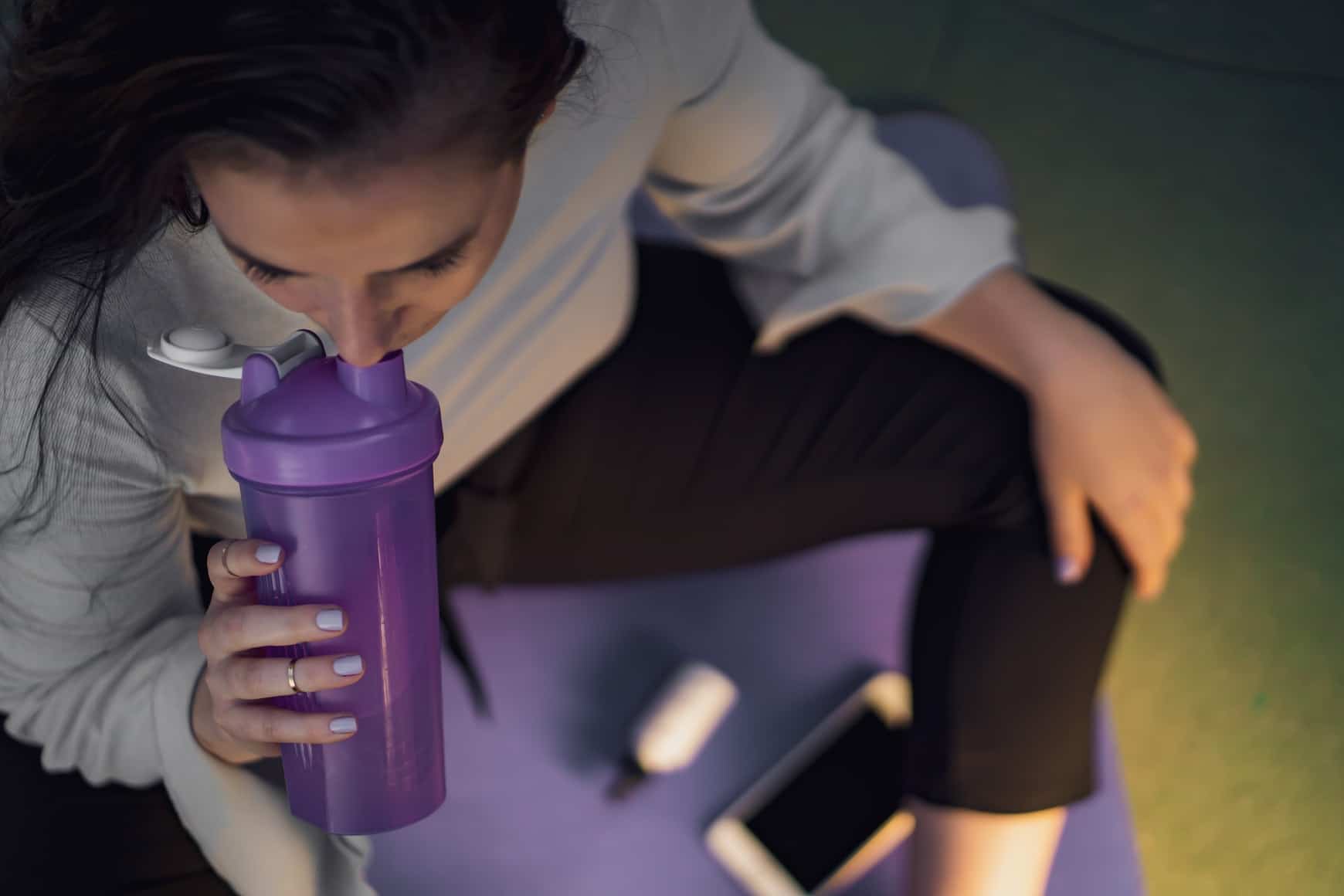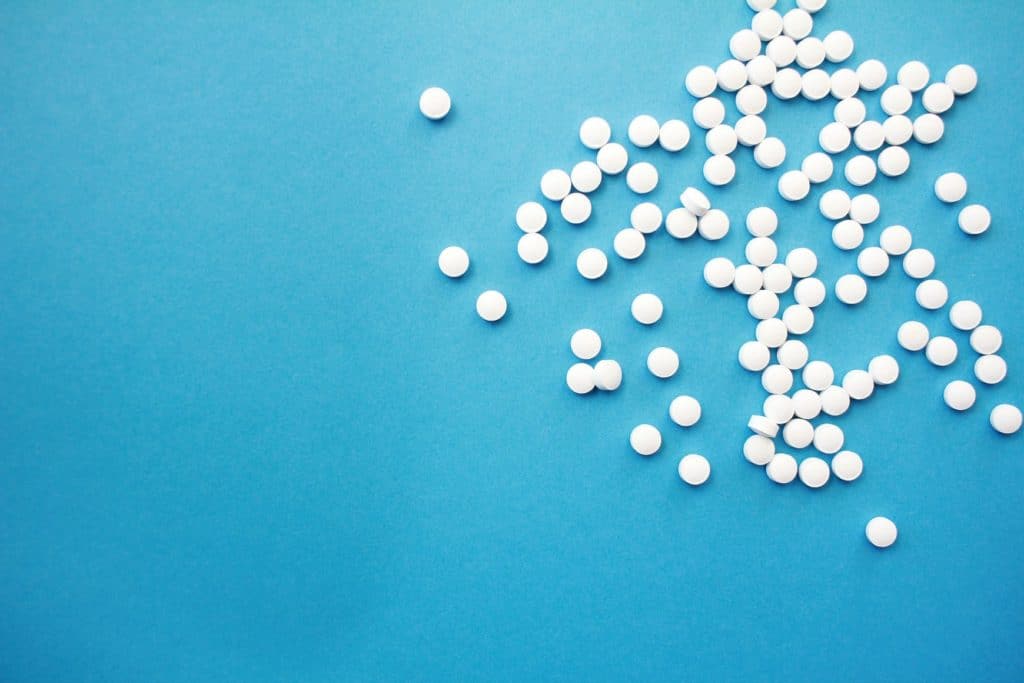
“But no one should ever be taking pre-workout without first understanding how much caffeine they are about to ingest.”
Need something to give you energy before a workout? How about a $40 tub of bright red powder that will make you itchy, jittery, energized, and potentially unhealthy? Then you will love pre-workout! But what if you don’t love it or its side effects? This one is all about pre-workout supplements and what is in them.
What are Pre-Workout Supplements and what are they used for?
A pre-workout supplement or just “pre-workout” is taken before a workout, as the name implies, and usually contains a high dosage of caffeine. Its purpose is to energize you for the workout.
Right off the bat, you may be wondering what the difference is between a pre-workout and an energy drink such as Monster, Redbull, or 5-Hour Energy. Truthfully, there isn’t much of a difference in ingredients or effect. Both give you energy. You may be under the impression that a pre-workout is specifically for working out in the gym, designed to increase muscle mass or recovery, but that really comes down to the ingredient list. For example, regular energy drinks you find at gas station convenience stores don’t usually contain creatine monohydrate- a common supplement for athletes.
What is in a Pre-Workout
A powder-form pre-workout is going to consist of mostly stimulants, with some other things like creatine or taurine or sweeteners. There are non-stimulant pre-workout supplements available but are hard to find and not very popular.
The important ingredients:
Caffeine
The bread and butter of almost every pre-workout is caffeine. Caffeine is a hell of a stimulant that is very safe to take, easy to dose, and socially acceptable. Each supplement is going to contain different amounts, so it’s important to read the label and understand the dose you’ll be taking.
Other ingredients:
Creatine monohydrate
Creatine is great, as you should already know, but its presence as an ingredient in a pre-workout isn’t necessary. To enjoy the benefits of creatine, it should be taken every day, and the dose should be 3-5 grams. The problem is that pre-workout supplements shouldn’t be taken every day, and often under-dose the creatine, sometimes containing even less than 1g per serving. Creatine is such a cheap supplement that it doesn’t need to be lumped in with other products anyways. A $20 tub of creatine should last you a few months.
L-citrulline/ beetroot powder
L-citrulline, citrulline malate, malic acid, and beetroot powder are all common ingredients in a pre-workout and all share the same purpose: to increase nitric oxide levels in your body. What does nitric oxide do? Well, it’s a vasodilator, and that means that it increases your blood flow and results in a better pump when working out. Has science proven this effect to increase muscle growth? No, it has not. In fact, there is very little evidence that these ingredients have any benefit in muscle growth. On their own, these supplements have a place, increased blood flow is obviously a good thing. But spending top dollar on a pre-workout powder for these ingredients feels like a scam.
Taurine
Taurine has an effect that can mitigate the unwanted side effects of caffeine such as jittering or loss of focus. For these reasons, it is a common ingredient in energy drinks but is often found in pre-workouts.
Niacin (Vitamin B3)
Niacin has some health benefits, such as skin health, diabetes prevention, and helps treat high cholesterol, however, many studies have shown that the negatives outweigh the benefits when used as a muscle-building supplement. For example, it can inhibit the breakdown of fatty acids and has been shown to increase lactic acid levels.
So you may be wondering, why the heck is it in my pre-workout supplement then? An interesting side effect that Niacin has is giving the user a tingling feeling. This tingling feeling is caused by light inflammation of the skin, and the reason this ingredient is included is simply to give the impression that the product is working. The downside to this is that some people are sensitive to this effect and it can cause annoying itching in either specific spots or all over the body. You don’t need niacin in your pre-workout.
Vitamin C
You’ll sometimes find vitamin C in your pre-workout. Vitamin C is added for flavour and health benefits. There’s no science to support the idea that vitamin C might help muscle growth, so why it’s in pre-workouts is kind of a mystery.
Is it safe to take?
All supplements, in general, may or may not be safe to take. You won’t drop dead from the moment the mystery powder touches your tongue, but a lot of studies have shown that various types of pre-workout supplements can be damaging to your health in the long term.
There are different dangerous ingredients to look out for and one of those is dye. Various dyes such as Blue No. 2 or Yellow No. 6 have been linked to cancer. Other dyes have been linked to hypersensitivity, allergies, and hyperactivity. There are a lot of pre-workouts available that do not contain dyes.
Another one is Acesulfame Potassium (you may see it on the label as “Ace K”) which is an artificial sweetener that is currently being researched under the hypothesis that it may be linked to negative effects on cognitive function and possible carcinogenicity.
So you grabbed your tub from the pantry and you’re reading the label. You don’t see any dyes or Ace K, but you may notice that the caffeine dose is quite high.
Many, many pre-workouts dose caffeine too high. The FDA advises no more than 400mg be taken in a single day. Now, this is a guideline for the general population that does not and cannot account for an individual’s size. Like most drugs, a larger person is going to require a higher dose. But no one should ever be taking pre-workout without first understanding how much caffeine they are about to ingest. Overdosing on caffeine can be extremely uncomfortable and can sometimes be fatal when taken in huge doses.
Something less common but I feel is worth mentioning is that supplements are often found to contain illegal compounds. This was more common ten to fifteen years ago but still happens. These supplements don’t last long but every time they are found and pulled from store shelves, two more take their place. The illegal compounds found in them are often related to performance.
Less dangerous or natural alternatives

You might want to cycle off of the heavily caffeinated stuff for a while, or perhaps test the waters of stimulant-free pre-workouts.
Stim-free products are, in my own opinion, not worth the money (is any pre-workout worth the money?). These often contain a few of the ingredients we just went over, such as taurine and L-citrulline but drop the caffeine and other stimulants. To be honest, these aren’t going to do very much for you because the only ingredient that was truly effective in the regular products was caffeine.
So what is the answer here? People want to take something prior to their workout, but want to avoid dangerous ingredients and also have it at a low cost. Well, the answer is caffeine pills.
Caffeine pills are available in capsule or pill form and can be broken up to dose more accurately. It can be added to your drink of choice, even if it’s just water, and they’re dirt cheap. You can usually grab a bottle of 100 for under $10.
How it can affect your sleep

You probably already understand that our muscles grow after they receive a proper stimulus and nutrients to do so, and that process largely occurs when we are resting. This is why it is so important to consider how our caffeine consumption will affect sleep.
There is a chemical in our brain called adenosine. Adenosine is produced over the course of the day and builds up, causing sleepiness. Caffeine is effective at blocking the adenosine receptors we have, mitigating that build-up.
We also all abide by something called the circadian rhythm. This is a physiological pattern that operated on a 24-hour cycle, held in check by the day/night cycle. This affects us on a physical, mental, and behavioral level. Studies show that caffeine can skew our circadian rhythms and prevent us from falling asleep on time.
Even if you’ve taken caffeine but you don’t have any trouble falling asleep, you will still experience a lower quality of sleep. Caffeine affects slow-wave sleep, which is essential since it dictates how rested we feel when we wake up. If your slow-wave sleep is compromised, you may wake up extra tired and grumpy.
When to take caffeine
Caffeine usually takes 30-60 minutes to ramp up to its full effect, so taking it roughly 45 minutes before your workout is a safe bet. However, many factors can alter this time frame such as individual variances, or the amount of food in your stomach. If you take caffeine first thing in the morning without eating any breakfast, you’ll probably feel the effect quickly, sometimes as soon as 10 minutes after consumption.
Caffeine is metabolized rather quickly and has a half-life of 4-6 hours. A half-life is the amount of time that your body takes to metabolize half of the caffeine consumed. If you take 100mg at 8 AM, you will have metabolized 50mg sometime between 12 PM and 2 PM.
This is especially important to consider if you’re going to take caffeine in the afternoon, before your workout. Studies show that no caffeine consumption after 12 PM greatly increases one’s sleep quality. If you need to take caffeine after 12 PM, try a smaller dose.
Thank you for making it to the end of the article, I appreciate you taking the time to read this. If you want to support me or support the website, consider sharing this post or telling your friends about us.